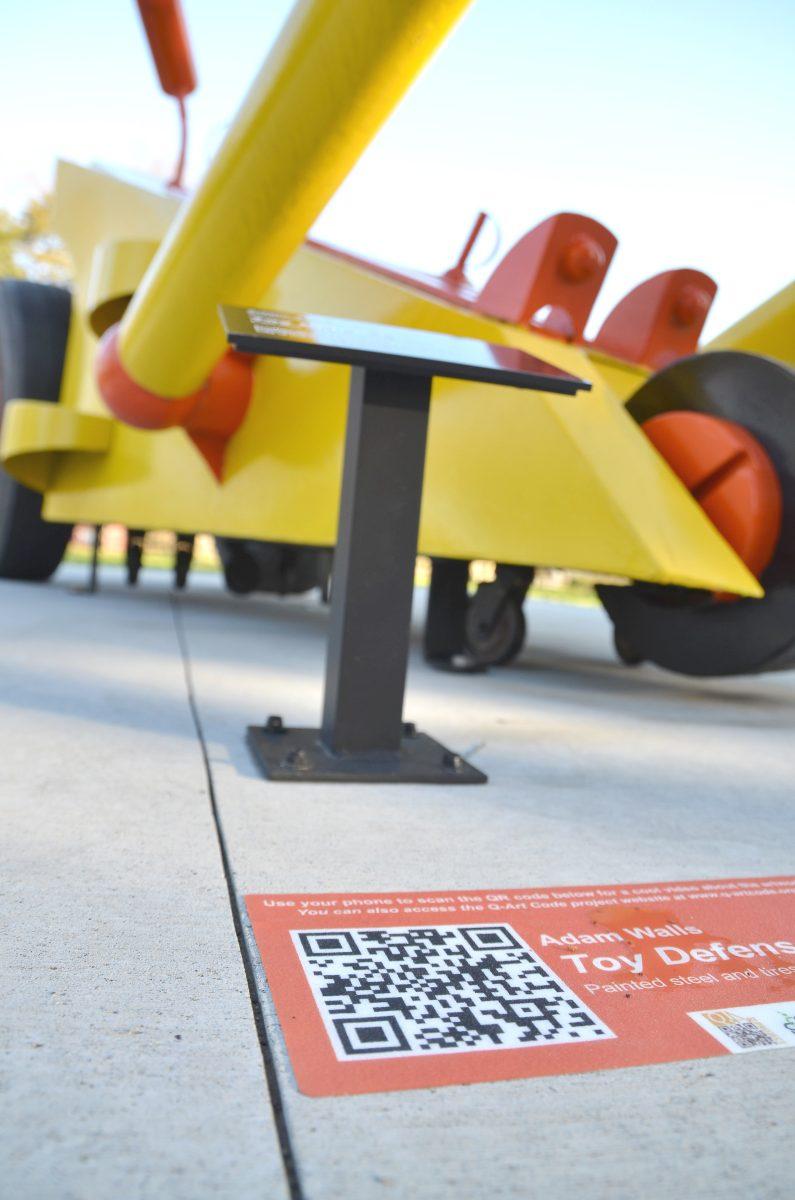Thanks to N.C. State students and city of Raleigh workers, art education is as simple as unlocking your smart phone.
The City of Raleigh Arts Commission partnered with N.C. State’s Advanced Media Lab and the College of Design to create the Q-Art Code Project. The project provides the public with an interactive way to learn about art.
The program developed quick response codes that were placed on several art pieces. People can scan these QR codes on their smart phones, and they will be taken to a page with videos, pictures and more information about the artwork.
Raleigh public arts coordinator Kim Curry-Evans led the project. Curry-Evans said QR codes were a modern way to engage the public in the arts.
“QR codes are fairly new and gaining steam, so we thought it was a great way to educate people about artwork around Raleigh,” Curry-Evans said. “When you scan the code, all the information on the piece is right there. There are videos, maps, and you can even leave your comments and thoughts.”
The Raleigh Arts Commission partnered with N.C. State’s media lab to shed light on public art. Twelve pieces were chosen to start the Q-Art Code Project.
The video supplements to those pieces were made by N.C. State graduate and undergraduate students in the fall semester in a class taught by Patrick Fitzgerald, associate professor in the College of Design.
“Students worked with different types of media and software packages, all developing their own videos, they did an excellent job,” Fitzgerald said. “If people do not understand public art, these QR codes are great because they will gain appreciation for a particular piece.”
Each student was assigned two works of art. Jaime Lee Andrews, a graduate student in arts and design, said she enjoyed working on the iconic Acorn statue by artist David Benson in Moore Square Park.
“Acorn was my favorite because it is so engrained in Raleigh’s culture,” Andrews said. “It was fun to meet local artist David Benson, his great personality lent itself well to the piece. He told me he had to crawl inside and out of the acorn while sculpting it (due to its size).”
Ijeoma Ahumma Onuh, senior in graphic design, focused on the Andy and Opie Statue. The piece is in Pullen Park and was created by Elliot and Ivan Schwartz in memory of Andy Griffith.
Ahumma Onuh travelled to Mount Airy to see the copy of the statue.
“It was cool to travel to Mount Airy for the Mayberry Days festival, which celebrated the life of Andy Griffith,” Ahumma Onuh said. “I got to document and capture many stories that made me appreciate the piece even more.”
Bert French, a graduate student in landscape architecture, hopes the project continues.
French created videos for the weather vane in Pullen Park and “Water Droplets” in the Buffaloe Road Aquatic Center.
“This project is a really good collaboration with the city to promote public art,” French said. “The class solely focused on the Q-Art Project … so the class really pushed ideas and worked hard. I think it would be a great idea to continue it.”
This program is much more than just seeing, according to Curry-Evans.
“When you know the background of an art piece and what it means, it is much more than just looking, it is educating,” Curry-Evans said. “We see this as an opportunity for people to become more interested in public art, and that’s a good thing.”
To find out more about the Q-Art Code Project and see the work of the design students and the Raleigh Arts Commission, visit q-artcode.org.








